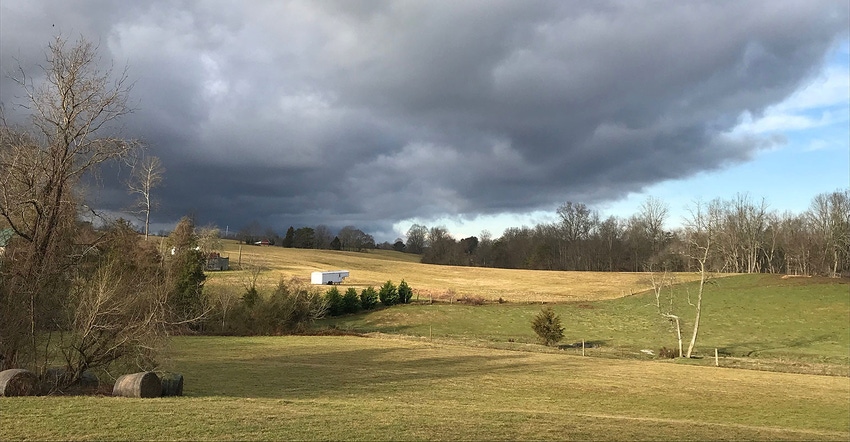
Federal Reserve Chairman Jerome H. Powell, after the U.S. Federal Reserves’ latest Federal Open Market Committee (FOMC) meeting on March 19-20, 2019, said the Fed’s goal is sustainable U.S. economic expansion, the maintenance of a strong job market and stable prices.
He said the U.S. economy is in a good place with a strong job market, the unemployment rate is near historic lows, and inflation remains near the 2 percent goal.
Chairman Powell further stated that the committee expects the U.S. economy will grow at a solid pace in 2019, but likely slower than the very strong pace of 2018; therefore, the Fed committee believes current policy stance is appropriate.
However, Chairman Powell says last year developments at home and around the world bear close attention. “Given the overall favorable conditions in our economy, my colleagues and I will be patient in assessing what, if any, changes in the stance of policy may be needed,” he said.
“With the benefit of fiscal stimulus and other tailwinds, growth in 2018 was strong — in fact, at 3.1 percent, the strongest year in more than a decade.”
In my words, the U.S. is increasingly witnessing and experiencing some strong global economic headwinds, which can no longer be ignored, due to weakened foreign growth in numerous regions and countries with emphasis on the European Union and its member countries, China, etc. Therefore, the U.S. Federal Reserve committee is presently signaling they remain data dependent and are going to patiently monitor U.S. and global economic activity region by region and country by country as the U.S. Federal Reserve moves from an emphasis on tightening, by increasing the fed fund rate and balance sheet reduction to an increasing emphasis on accommodation with neutral interest rates, potentially lower if needed, and a winding down of current balance sheet reduction.
I will write a follow-up or a Part 2 article, where I will discuss in much more detail, the Fed’s current shift from tightening monetary policy actions to policy actions that are likely to be increasingly accommodative as 2019 progressives.
Near Term Market Outlook for the Week Beginning March 25, 2019
U.S. Dollar Index: Sideways to down supportive of U.S. exports and economic activity. An accommodative U.S. Federal Reserve has signaled the dollar has potential to move sideways to down for a while against several global currencies. A neutral to lower dollar should be supportive of current U.S. economic activity and global economies in general. This is one key factor limiting the likelihood of a recession in 2019, Charts A5 to A8.
10-Year U.S. Treasury Yield: Sideways with downside bias.The U.S. Federal Reserve has signaled the global slowdown is far too burdensome on global growth to remain in a tightening mode of further increasing the fed funds rate. Thus, they pause and access their options, as well as potential new synchronizing options with global counterparts. With global investors fixated on global slowdown uncertainties, the demand will remain high for short duration, safe haven U.S. sovereign debt in the near term; therefore, 10-Year Treasury Yields should remain sideways with a slight downside bias, Charts A1 to A4.
$CRB Index: Upward near-term bias before weakness reemerges.With global deflationary forces remaining highly problematic, most of the world’s commodities having a supply surplus, and with the ongoing global realignment of the world’s currency, bond, equity, and commodity markets no simply strong limitations exist to this index’s upside. U.S., China and ongoing global trade and other policy disputes will remain a multiyear journey. Near term and ongoing maintenance of U.S. and global economic momentum will remain supportive of range bound commodity prices, until supply is curtailed due to increased demand or a supply disruption event or events, Charts B1 to B5.
$WTIC Light Crude Oil: Near term, light crude oil remains bullish as it finishes a topping process, potentially in the $61 to $64 per barrel area. Beyond a near term top, fundamentals and political intervention will remain bearish for light crude oil prices, potential range of ((46.39 to $61.70 per barrel). That said, this market is highly mis-directional. Charts B6 to B9.
Soybeans: Near term, dollar weakness supportive but not bullish for prices. Without additional concrete trade guidance, a trading range of $7.95 to $9.39 per bushel should be considered, Charts B10 to B13.
Corn: much the same as soybeans, near term dollar weakness supportive of prices. Without additional concrete trade guidance, consider a trading range of $3.44 to $3.89 per bushel, Charts B14 to B17.
Long Grain Rice: Planted acreage will define the trading range for 2019, presently a near term trading range of $10.26 to $11.22 per cwt. is pragmatic. Once we know USDA’s March 29, 2019 prospective planting acreage estimate, we can redefine the trading range, Charts B18 to B20.
Cotton: Without additional concrete trade guidance, a trading range of $0.64 to $0.79 cents per pound should be considered, Charts B21 to B24.
Wheat: Wheat now appears to be displaying a trading range between $4.28 and $4.86 per bushel. We will adjust our estimates as market dynamics unfold, Charts B25 to B28.
Source: Bobby Coats is a professor and extension economist in the Department of Agricultural Economics and Agribusiness, University of Arkansas System, Division of Agriculture, Cooperative Extension Service. E-mail: [email protected]. and is solely responsible for the information provided and is wholly owned by the source. Informa Business Media and all its subsidiaries are not responsible for any of the content contained in this information asset.
Download Slide Show for charts and expanded details, Click Download Link
No Crystal Ball: Since no one has a crystal ball, always consult an investment professional or professionals before making investment decisions.
DISCLAIMER-FOR-EDUCATIONAL-PURPOSES-ONLY
About the Author(s)
You May Also Like




